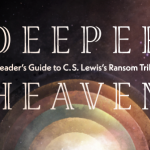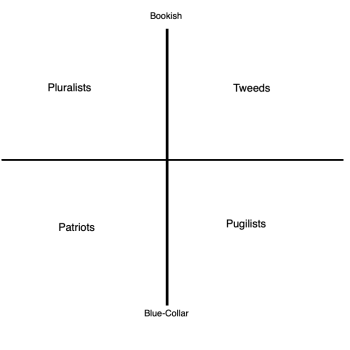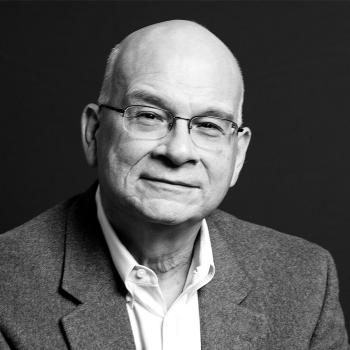 One of the profounder tragedies of adulthood is the loss of time for “big books,” those famous doorstopper novels we tell ourselves every year that we’ll read someday. In high school, I went through a phase familiar to many bookish teenagers—binging on classics one after another, from David Copperfield and The Canterbury Tales to more difficult fare like The Brothers Karamazov and Anna Karenina. But eventually, college and law school drew my attention away to other projects, and it was all I could do to keep up with my favorite pop-fantasy sagas between textbooks and tests. It wasn’t a total loss though: during vacations, I struggled through Ulysses and Infinite Jest for the thrill of bragging rights (I didn’t much like the former, but enjoyed the latter).
One of the profounder tragedies of adulthood is the loss of time for “big books,” those famous doorstopper novels we tell ourselves every year that we’ll read someday. In high school, I went through a phase familiar to many bookish teenagers—binging on classics one after another, from David Copperfield and The Canterbury Tales to more difficult fare like The Brothers Karamazov and Anna Karenina. But eventually, college and law school drew my attention away to other projects, and it was all I could do to keep up with my favorite pop-fantasy sagas between textbooks and tests. It wasn’t a total loss though: during vacations, I struggled through Ulysses and Infinite Jest for the thrill of bragging rights (I didn’t much like the former, but enjoyed the latter).
I’ve been out of school for several years now, but I’ve never again read fiction with the same gusto I once did. For me, it’s far easier to justify sinking hours into Charles Taylor’s A Secular Age or Eugene McCarraher’s The Enchantments of Mammon—both of which, I know, will end up proving useful to my academic work and other writing (and, sometimes, to my day job)—than to spend that time on flights of imagination. A couple years ago, I gave up on Brandon Sanderson’s Stormlight Archive, despite rave reviews from my friends: after chugging through the 1300 pages of the first book, I simply couldn’t justify that kind of time investment on a fantasy saga anymore.
But I am delighted to report that Sigrid Undset’s Kristin Lavransdatter—the sprawling, tangled, sometimes almost impenetrable story of the life of a medieval Norwegian woman from early childhood to premature death, with a length and density rivaling War and Peace —is worth the commitment. For any book of this scale, it’s hard to know the right entry point for discussion. I could rave about its sweeping descriptions of Scandinavia’s natural beauty, or about the colossal work done by translator Tiina Nunnally in making Undset’s work accessible and lively. Instead I’ll simply say this: Kristin Lavransdatter is a novel that invites its reader to inhabit a life-world at once both recognizably familiar and deeply alien: a universe in which Christianity dominates the culture but has not quite supplanted the old Norse pagan faith, and in which strong social convention wars with the realities of human desire.
(I’ll discuss the book at length below. If “spoilers” are a concern for you, read no farther—although like many classics, this isn’t a book that derives its enduring power from the sheer element of surprise.)
Kristin Lavransdatter comprises three sub-volumes—The Wreath, The Wife, and The Cross, each chronicling a different season of its heroine’s life. We first meet Kristin as a sweet-tempered young girl, growing up under the tutelage of her pious father Lavrans and mother Ragnfrid in the little hamlet of Jorundgard. As she grows to maturity, she is betrothed by Lavrans to the sensible-yet-boring Simon Darre, a local man from a good family, but secretly finds him unappealing.
While spending some time studying at a local convent, Kristin meets the rakish Erlend Nikolausson, a handsome and well-off knight with a seamy reputation. A series of illicit trysts follows between the inexperienced Kristin and the sincerely smitten Erlend, ultimately resulting in the first signs of an unplanned pregnancy. Overcome by passion, Kristin insists on calling off her marriage to Simon and throws in her lot with Erlend—a decision that profoundly grieves her family, but in which they ultimately acquiesce. (The faithful Simon, for his part, is married off to Kristin’s little sister.)
Kristin thus becomes the mistress of Erlend’s house, and promptly bears him seven strong sons. Their marriage is loving, albeit tumultuous—particularly once Erlend finds himself entangled in a political struggle over the rulership of Norway. Through Erlend’s carelessness in his private life, a plan to pressure the sitting king to cede power is revealed, leading to Erlend’s capture and torture. Simon and Kristin manage to save his life, but at the cost of Erlend’s land and title, leaving him penniless and dependent on Kristin’s inherited holdings.
Back home in Jorundgard, Kristin and Erlend soon find themselves at loggerheads. Old wounds reopen, old grievances fester, and soon the two grow apart. A series of crises eventually drives Kristin to take up residence in a convent, where (on the eve of the Black Death) she must face a final moral test.
As is perhaps clear, the specter that haunts the pages of Kristin Lavransdatter, more than any other, is the shadow of resentment—of enduring frustration calcified into poisonous hate. Decades of marriage pass, and Kristin continues to blame her husband for leading her off the straight and narrow road; Simon, who has carried a torch for Kristin since childhood, cannot bring himself to forget Erlend’s seduction and Kristin’s complicity; Kristin’s father Lavrans never quite allows himself to love his wife fully or allow Kristin to atone for her wrongs.
Indeed, the only major character that does not nurse his own layers of grievance is Erlend himself—and Undset wisely permits a cloud of ambiguity to hang over that personality trait. Through Kristin’s eyes, Erlend is feckless and casually cruel, lacking the moral fiber to seriously reckon with his sins and understand the far-reaching significance of his actions. But from a different perspective, perhaps the reverse is true: maybe Kristin’s endless moral scorekeeping is her own hamartia, and perhaps Erlend, for all his manifold flaws, is one of the only characters in Undset’s world that seems capable of giving and receiving grace. Grudge-keeping certainly does seem to be the besetting sin of this whole culture.
But that’s not to say that this culture lacks its own distinctive beauty. Indeed, one cannot read Kristin Lavransdatter deeply, entering into the lives of its heroes and heroines, without feeling a certain connection to—even affection for—the long-lost civilizational order that Undset depicts. Consider, for instance, a term that is frequently invoked (with no small degree of hand-wringing) among Christian writers today: “moralistic therapeutic deism.” The phrase was first coined by Notre Dame sociologist Christian Smith to describe the generally blasé attitude to spirituality that tends to characterize even the more religiously observant sectors of American culture: God generally likes human beings and wants them to be good, and if they’re good, they’ll be rewarded. Assuming Smith is right, the metaphysical-ethical default position among religious believers seems to lie somewhere at the intersection of Santa Claus and The Secret. Compared to this, Kristin Lavransdatter’s theologically “thick” world, with its relics and its community festivals and its mighty cathedrals, looks positively appealing in certain ways. And so the yearning of the nostalgic heart is kindled: wouldn’t it be so much better if we could go back to the days when everyone took their faith more seriously?
Those who tend to be of a conservative disposition, like me, are certainly susceptible to this way of thinking. Confronted by a culture that seems hellbent on deconstructing and dismantling every vestige of the past, the natural temptation is to fall back on vaguely reactionary murmurings and idealizations of lost worlds. But even so, I cannot help acknowledging that Kristin’s cosmos, in all its beauty and its tragedy and its seeming strangeness, is theologically closer to ours than one might suspect at first glance.
For one thing, folk spirituality plays a very large role in the everyday lives of Kristin and her kinfolk. Even within a formally Christian milieu, villagers still turn to pagan trickster-spirits and superstitious rites in extremis (at one point, in a breathlessly paced sequence, Kristin resorts to ancient witchcraft in a bid to save the life of a dying child). The portrait of faith that results, it seems to me, is not all that different from the motley, syncretic belief systems that characterize 21st-century spirituality—just older and less glamorous. Kristin’s neighbors may turn to frog’s legs and chicken sacrifices rather than healing crystals or hot yoga, but the same impulse is there.
And the cultural similarities between past and present seem to me to run deeper still, particularly where socio-religious sensibilities are concerned—though the point requires some elaboration.
In the course of defending a broadly “Constantinian” model of Christendom, theologian Jean Daniélou makes some remarks in his book Prayer as a Political Problem that have haunted me ever since I read them some time ago.
Experience shows that it is practically impossible for any but the militant Christian to persevere in a milieu which offers him no support. Think of the many who attend service in their villages but cease to go once when live in a town. Are we then to speak of sociological Christianity and conclude that it is better to be rid of Christians such as these? It would be entirely wrong of us to do so. The Christianity of these Christians can be real, while yet not personal enough to prevail against the current. Such Christians have need of an environment that will help them.
Hence, argues Daniélou, one ought to long for a “Church which is mud-splashed from history because it has played its part in history,” a Church that has fought to bring about such an environment conducive to spiritual things. The passage is, in short, a rather neat distillation of the nostalgic disposition: what could be a better society-transforming force than the Church of medieval days?
I find this passage particularly arresting, though, because it upends the framings common to many discussions of “Christianity and culture.” Is the implication of Daniélou’s argument that something like “moralistic therapeutic deism” can indeed be enough, at least for the masses? Might we perhaps call this “sociological Christianity” “moralistic therapeutic sacramentalism”—an approach to faith that conceives of sacramental grace in ex opere operato terms and has little to say about hardness of heart or inner disposition? As a Lutheran, I am certainly committed to acknowledging the extrinsicity of grace—the power of salvation, in a famous Lutheran formulation, always lies extra nos, outside us—but at least sociologically, I find it difficult to see how a “Christian society” could long endure if it allowed the spiritual life to be “defined down” to rote formalism. And this is a question Kristin Lavransdatter leaves unsettled.
The characters of Kristin Lavransdatter are all formally religiously observant—they attend services faithfully, honor the clergy, make penance for their misdeeds, and so on—but their religious sentiments could hardly be more different. As the book draws to a close, Kristin experiences a religious epiphany in which she finally comes to terms with the love of God and the accomplishment of her salvation.
[I]n the solitude of the cloister and in the doorway of death someone was waiting for her who had always seen the lives of people the way villages look from a mountain crest. . . And he had come down among them, his feet had wandered among the lands, stood in castles and in huts, gathering the sorrows and sins of the rich and the poor, and lifting them high up with him on the cross. Not my happiness or my pride, but my sin and my sorrow, oh sweet Lord of mine. She looked up at the crucifix, where it hung high overhead, above the triumphal arch.
But the same cannot be said of others in Kristin’s world. On the one hand, the ever-sorrowful, ever-guilt-ridden Lavrans flagellates himself every Good Friday, concealing the bloody whip beneath the clothes of his trunk. For him, faith is suffering and struggle, a series of ritualistic observances undertaken dutifully but that bring no peace. On the other, Erlend’s religious observances seem strictly pro forma: he attends Mass and supports the church as befitting a man of his station, but apparently sees no real connection between the teachings of the Church and the lifestyle he chooses to adopt. (When he eventually perishes, he dies unshriven, refusing to be anointed by a priest whom he dislikes.)
Again, the reader feels a pang of recognition—these characters are not so different from us. Even within a medieval “Christian society,” not all are as devout as Kristin or can draw close to the heart of Christ, and so too today. Perhaps, in the end, this struggle is always worked out within the souls of individuals, not within the polis at large, and there can be no “sociological” substitute for that wrestling.
Maybe, then, Daniélou’s assessment of the trajectory of things was wrong. History does seem to have put the lie to his hypothesis. Unlike its European peers, America was not founded as a confessional state, but it enjoys fairly high rates of religious observance compared to other Western democracies; Kristin’s God-haunted Scandinavia, by contrast, is now one of the most secular regions of the world. Might the very effort to institutionalize a theologically “helpful” environment give rise to a formalism that tends to corrode devotion like Kristin’s?
Søren Kierkegaard certainly thought so. And while conservative branches of Lutheran thought have long had a horror of “pietism”—revival movements with an emphasis on inner spiritual awakening and a pattern of right conduct—on the grounds that these tend to introduce strong currents of emotivism and subjectivism into theology proper, it is perhaps worth noting that the opposite extreme (theological aridity and the reduction of the Christian life to a mere repetition of rehearsed behaviors) poses dangers of its own. It was none other than Johann Gerhard, a leader of “orthodox Lutheranism,” who argued that “[l]ove of God does not enter the soul unless all self-love and love of the world have previously been expelled.”
In any case, consider all this an extended argument that, if you find yourself compelled by these questions, Kristin Lavransdatter really ought to be on your reading list. No book I have read in the last several years is more worthy of the time commitment. It may take weeks to get through, but this journey is a genuinely unforgettable one.












